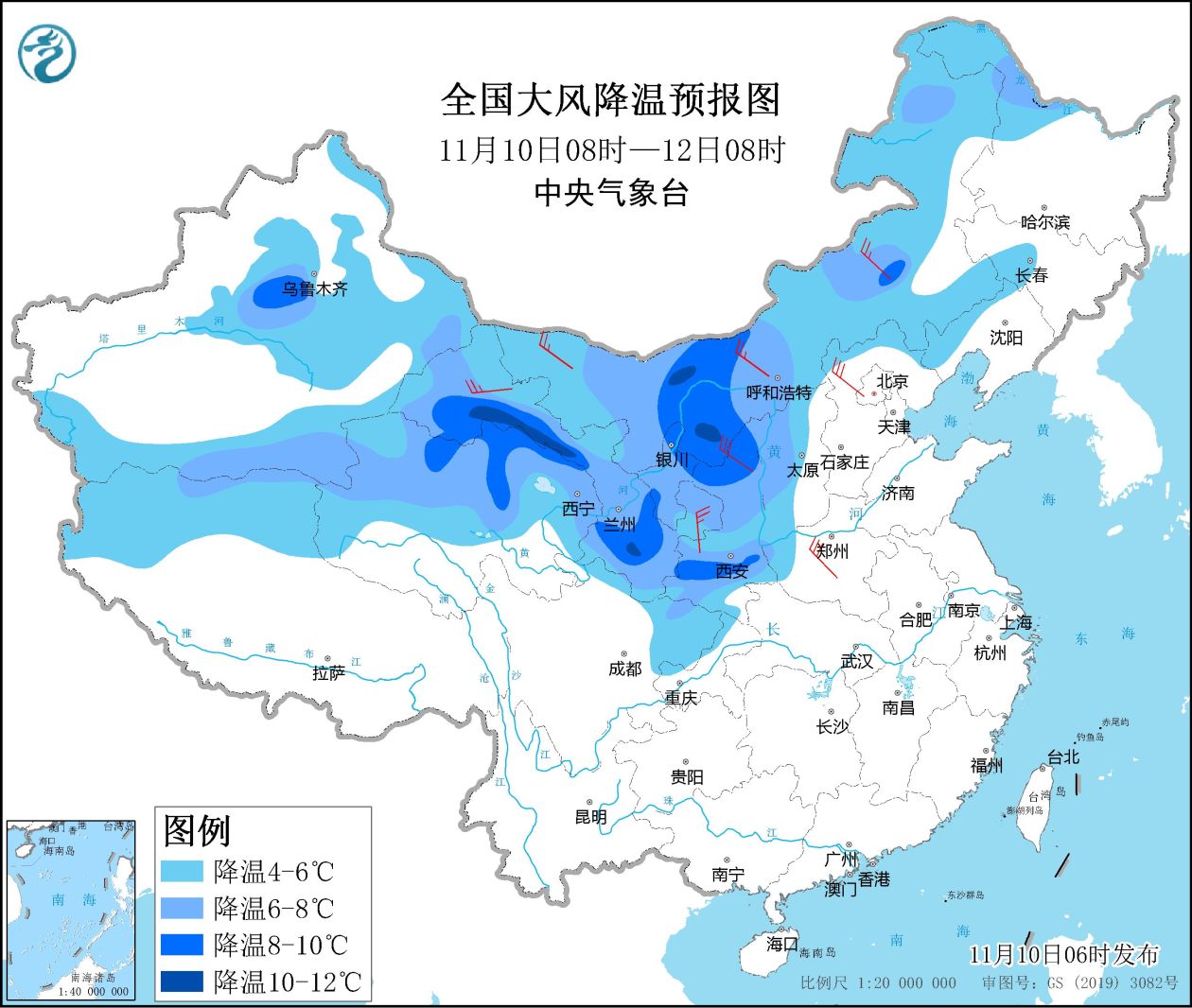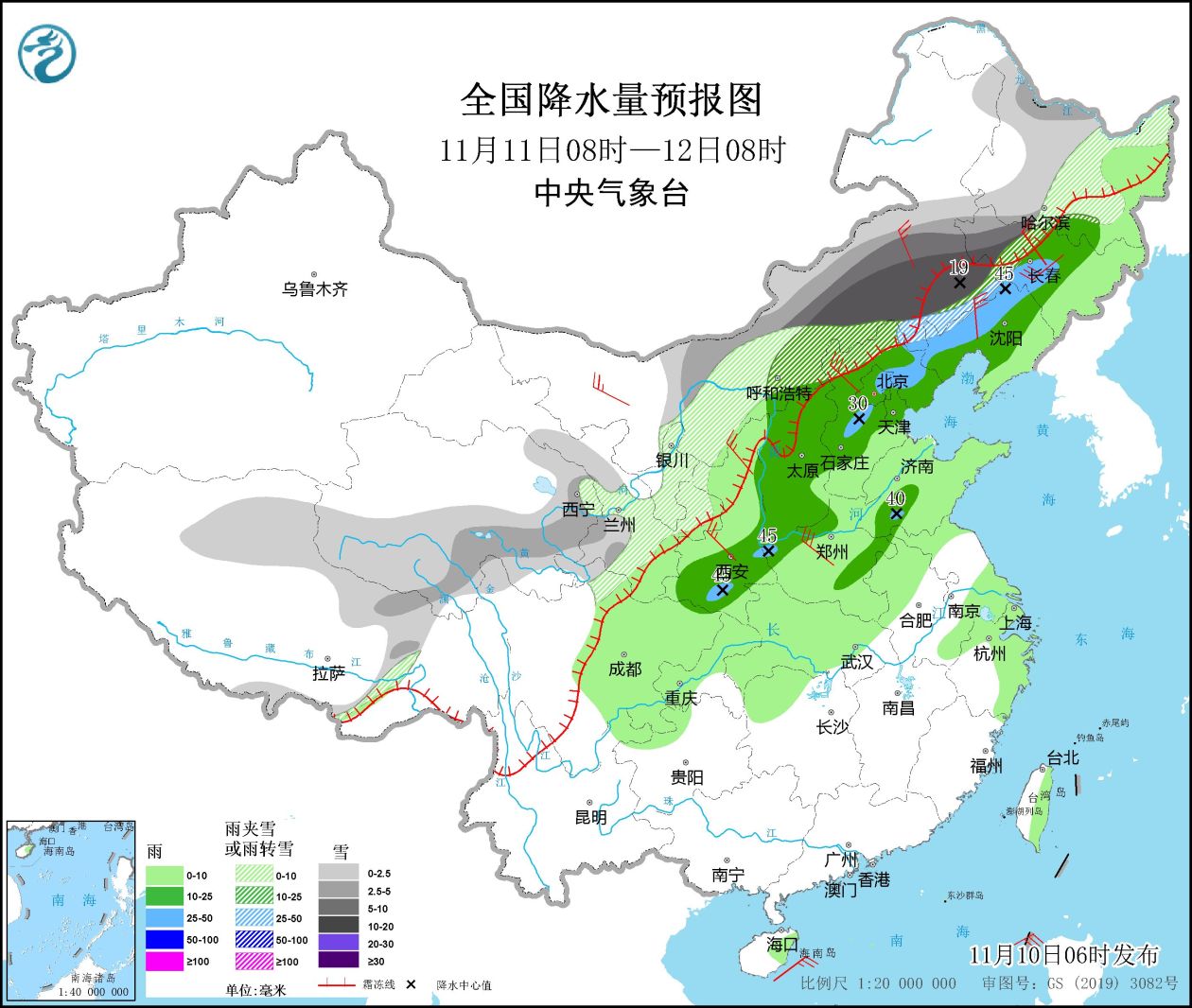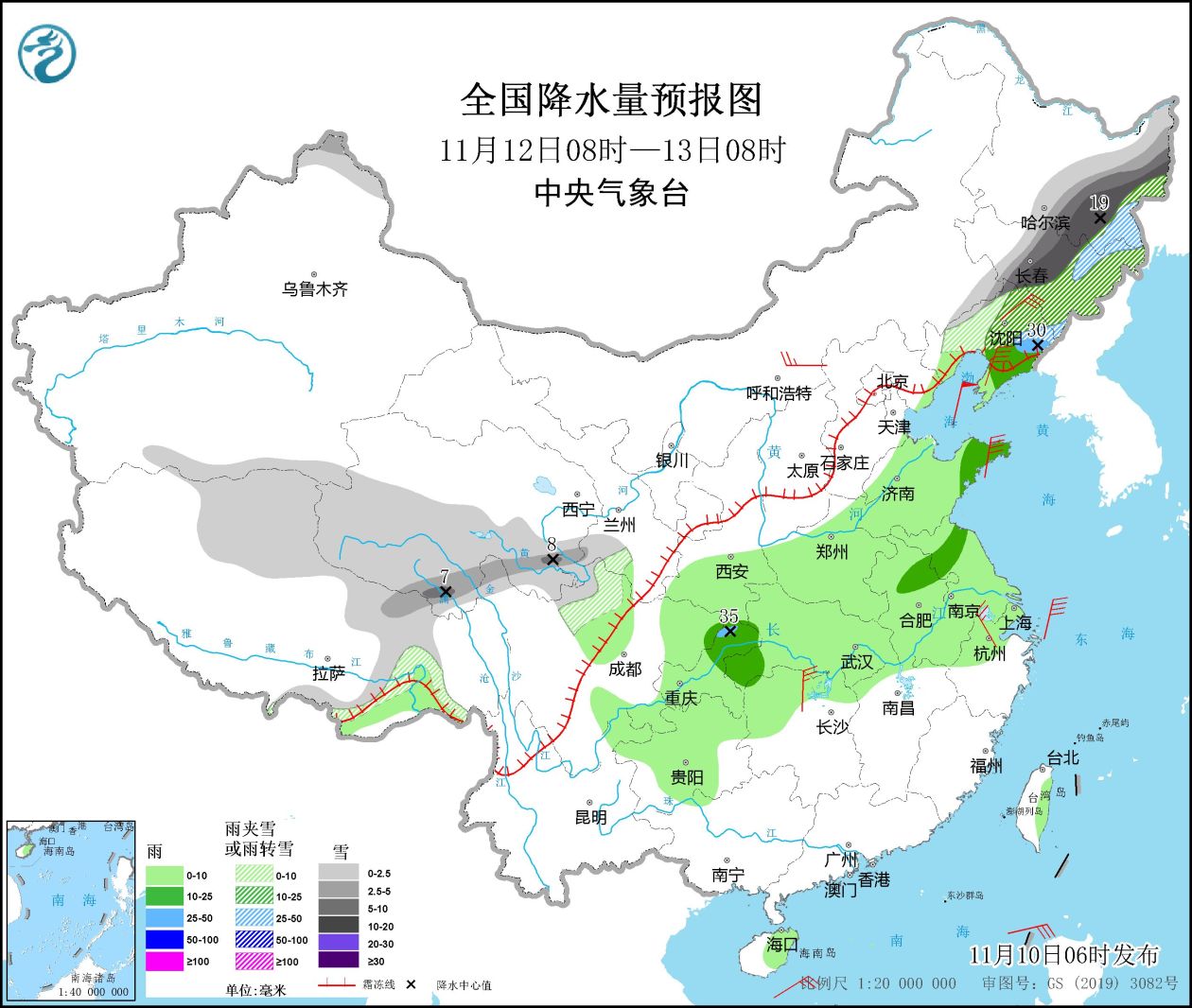Central Meteorological Observatory: Cold air will affect most parts of China. There is heavy fog in Huanghuai and other places in North China.
CCTV News:According to the website of the Central Meteorological Observatory, due to the influence of strong cold air, from 10th to 13th, northerly winds of 4~6 grades will appear in most parts of northwest China, North China, Northeast China and most parts of the south of the Yangtze River, with the temperature dropping by 4~8℃, and the temperature in central and southeastern Inner Mongolia, Liaoning, Jilin and southeastern Heilongjiang will drop by 10~14℃, and the local temperature will be above 14℃. It is estimated that from the morning of November 10th to the morning, there will be foggy weather with visibility less than 1km in parts of eastern Beijing, Tianjin, northeastern and southern Hebei, southeastern Shanxi, northwestern and southern Shandong, Jiangsu, eastern Anhui, Shanghai, northern Zhejiang, central and northern Shaanxi and Hetao area of Inner Mongolia.
Cold air will affect most parts of China.
Affected by strong cold air, from 10th to 13th, northerly winds of 4-6 grades will appear in most parts of northwest China, North China, Northeast China and most parts of the south of the Yangtze River, and the temperature will drop by 4-8℃. The temperatures in central and southeastern Inner Mongolia, Liaoning, Jilin and southeastern Heilongjiang will drop by 10-14℃, and the local temperature will be above 14℃.
Among them, from 08: 00 on November 10 to 08: 00 on December 12, the temperature in central and eastern Xinjiang, most of Inner Mongolia, Gansu, eastern and northern Qinghai, Ningxia, Shaanxi, western Shanxi, northern Hebei, western Liaoning, western Jilin, western Henan, northeastern Sichuan and other places will drop by 4~6℃, and the cooling range in parts of western and southern Gansu, Hetao area of Inner Mongolia and northwestern Shaanxi will reach 8 ~ 10. There will be 4~6 northerly winds and 7~8 gusts in the above areas (see Figure 1). The Central Meteorological Observatory continued to issue the gale cooling forecast at 06: 00 on November 10th.

Figure 1 National gale cooling forecast chart (08: 00 on November 10th-08: 00 on December 12th)
Affected by cold and warm air, there will be a wide range of rain and snow weather in the central and eastern regions from the 10th to the 12th, with heavy rain in parts of Shaanxi, south-central Shanxi, central and northeastern Hebei and south-central Liaoning. There are heavy snowstorms in parts of central and southeastern Inner Mongolia, northern Liaoning, Jilin and southeastern Heilongjiang.
There is heavy fog in Huanghuai and other places in North China
It is estimated that from the morning of November 10th to the morning, there will be foggy weather with visibility less than 1km in parts of eastern Beijing, Tianjin, northeastern and southern Hebei, southeastern Shanxi, northwestern and southern Shandong, Jiangsu, eastern Anhui, Shanghai, northern Zhejiang, central and northern Shaanxi, Hetao area of Inner Mongolia, etc. Among them, visibility is less than 500km in parts of southern Tianjin, northern Jiangsu, northeastern Anhui, Shanghai, northern Zhejiang and Hetao area of Inner Mongolia. The Central Meteorological Observatory continued to issue a foggy yellow warning at 06: 00 on November 10.
Specific forecast for the next three days
From 08: 00 on November 10 to 08: 00 on November 11, there were small to medium snow or sleet and local heavy snow in parts of western and northeastern Inner Mongolia, northwestern Heilongjiang, eastern and northern Qinghai-Tibet Plateau, central and eastern Gansu and northern Ningxia. There are small to moderate rains in Hetao area of Inner Mongolia, Liaoning, south-central Gansu, most of Ningxia, Shaanxi, Shanxi, southwestern Hebei, western and northern Henan, Sichuan Basin and eastern Zhejiang, among which there is heavy rain (25 ~ 45 mm) in parts of northwestern Shaanxi. There are 4 ~ 6 winds in parts of eastern Xinjiang, most of Inner Mongolia, Hexi in Gansu and Ningxia (see Figure 2).

Figure 2 National Precipitation Forecast Chart (08: 00 on November 10th-08: 00 on November 11th)
From 08: 00 on November 11th to 08: 00 on the 12th, there were small to medium snow or sleet in parts of Inner Mongolia, Heilongjiang, western Jilin, eastern and southern Qinghai, central and southern Gansu, Ningxia, northwestern Shaanxi and northern Hebei, among which there were heavy snowstorms (10 ~ 19 mm) in parts of central and eastern Inner Mongolia and western Jilin. There are small to moderate rains in the eastern and southern parts of Northeast China, south-central North China, eastern Northwest China, Huanghuai, Jianghan and Sichuan Basin, among which there are heavy rains (25-45 mm) in parts of central Jilin, western Liaoning, southwestern Shaanxi, north-central Hebei, northeastern Beijing and southwestern Shandong. There are 4 ~ 6 winds in most parts of Inner Mongolia, Northeast China, Huanghuai and other places (see Figure 3).

Figure 3 National Precipitation Forecast Chart (08: 00 on November 11th-08: 00 on December 12th)
From 08: 00 on November 12 to 08: 00 on November 13, there were small to medium snow or sleet in parts of eastern Heilongjiang, central and eastern Jilin, central and northern Liaoning, southern Qinghai, northern and eastern Tibet, and northern Sichuan Plateau. Among them, there were heavy snowstorms (10-19 mm) in parts of southeastern Heilongjiang and central and eastern Jilin. There are small to moderate rains in parts of the south of Northeast China, the southeast of Northwest China, Huanghuai, Jianghuai, Jianghan, northern Jiangnan, eastern Southwest China and Hainan Island, among which there are heavy rains (25 ~ 35 mm) in parts of eastern Liaoning and northeastern Chongqing. There are 4 ~ 7 winds in parts of central Inner Mongolia, Liaoning, northern Hunan and northern Zhejiang (see Figure 4). There are 7 ~ 8 strong winds in Bohai Sea.

Figure 4 National Precipitation Forecast Chart (08: 00 on November 12-08: 00 on November 13)
Influence and concern
From the night of 1.9 to the 13th, strong cold air continued to affect our country, with strong winds cooling in the central and eastern regions and large-scale rain and snow in the north, and we were concerned about the adverse effects on traffic, urban operation, human health and energy supply.
2.10-11 Fog or haze weather and its influence in Huanghuai and other places in North China;
3. Pay attention to the development trend of meteorological drought in Jiangnan and northern South China;
4 forest and grassland and urban and rural fire prevention meteorological services.